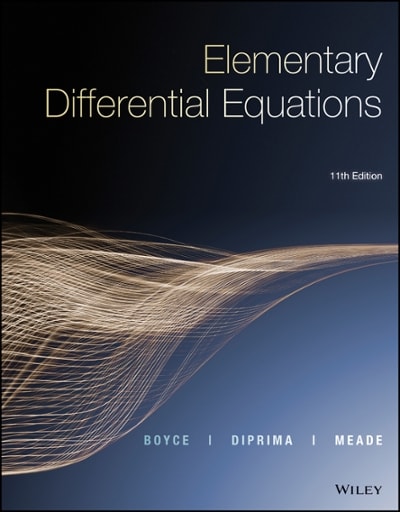Question
(1) Bivariate regression. Agresti & Finlay p. 289, problem 9.4 (4 points; 2 points for each answer) The OECD (Organization for Economic Cooperation and Development)
(1)Bivariate regression.Agresti & Finlay p. 289, problem 9.4 (4 points; 2 points for each answer)
The OECD (Organization for Economic Cooperation and Development) consists of 20 advanced, industrialized countries. For these nations, the prediction equation relating y = child poverty rate in 2000 to x = social expenditure as a percent of gross domestic product is = 22 - 1.3x. The y-values ranged from 2.8% (Finland) to 21.9% (U.S.). The x-values ranged from 2% (U.S.) to 16% (Denmark).
(a)Interpret the y-intercept and the slope.
(b)Find the predicted poverty rates for the U.S. and for Denmark.
(2)Bivariate regression.Agresti & Finlay p. 289, problem 9.6 (4 points; 2 points for each answer)
A study of mail survey response rate patterns of the elderly found a prediction equation relating x = age (between about 60 and 90) and y = percentage of subjects responding of = 90.2 - 0.6x.
(a)Interpret the slope.
(b)Find the predicted response rate for a (i) 60-year-old, (ii) 90-year-old.
(3)Bivariate regression.Agresti & Finlay p. 289, problem 9.8 (4 points; 2 points for each answer)
A college admissions officer uses regression to approximate the relationship between y = college GPA and x = high school GPA (both measured on a four-point scale) for students at that college.
(a) Which equation is more realistic: = 0.5 + 7.0x, or = 0.5 + 0.7x? Why?
(b) Suppose the prediction equation is = x. Identify the y-intercept and slope, and interpret the slope.
(4)Bivariate regression.Agresti & Finlay p. 292, problem 9.22 (4 points; 2 points for each answer)
In the UN Human Development Report, one variable measured was x = percentage of adults who use contraceptive methods. Table 9.11 shows part of a printout for a regression analysis using y = fertility (mean number of children per adult woman), for 22 nations listed in that report. For those nations x had a mean of 60.0 and standard deviation of 20.6.
(a)State a research question that could be addressed with this output.
(b)Report the prediction equation and find the predicted fertility when (i) x = 0, (ii) x = 100. Show how the difference between these can be obtained using the slope.
Table 9.11
Predictor Coef SE Coef t Sig.
Constant 6.6633 0.4771 13.97 0.000
CONTRA -0.064843 0.007539 -8.60 0.000
Source Sum of Squares df
Regression 37.505 1
Residual Error 10.138 20
Total 47.644 21
(1)Bivariate regression.Agresti & Finlay p. 295, problem 9.30, a-c only (6 points; 2 points for each answer)
A study was conducted using 49 Catholic female undergraduates at Texas A&M University. The variables measured refer to the parents of these students. The response variable is the number of children that the parents have. One of the explanatory variables is the mother's education level, measured as the number of years of formal education. For these data, = 9.88, = 3.77, = 3.35, = 2.19, the prediction equation is = 5.40 - 0.207x, the standard error of the slope estimate is 0.079, and SSE = 201.95.
(a)Find the predicted numbers of children for women with (i) 8, (ii) 16 years of education.
(b)Find the correlation and interpret its value.
(c)Test the null hypothesis that mean number of children is independent of mother's educational level, and report and interpret the P-value.
(2)Causal relationships.Agresti & Finlay p. 315, problem 10.4 (3 points)
Cities in the U.S. have a positive correlation between Y = crime rate and X = size of police force. Does this imply that X causes Y? Explain.
(3)Multivariate relationships.Agresti & Finlay p. 315, problem 10.6(5 points)
Explain what it means to control for a variable; use an example to illustrate.
(4)Spurious correlation.Agresti & Finlay p. 315, problem 10.8 (5 points)
Figure 9.17 on page 285 of Chapter 9 showed a negative correlation between birth rate and television ownership. Identify a variable to help explain how this association could be spurious.
Step by Step Solution
There are 3 Steps involved in it
Step: 1

Get Instant Access to Expert-Tailored Solutions
See step-by-step solutions with expert insights and AI powered tools for academic success
Step: 2

Step: 3

Ace Your Homework with AI
Get the answers you need in no time with our AI-driven, step-by-step assistance
Get Started


